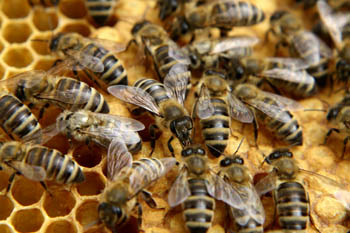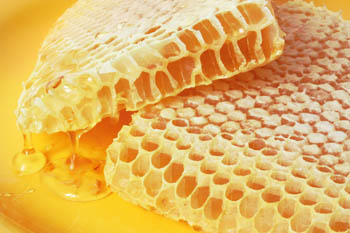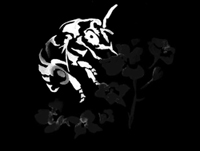Preventing Pollinator Poisoning
Pesticides can have both lethal and sublethal impacts on managed and wild pollinators. Pollinators can be exposed to pesticides by walking or flying in sprayed areas, or consuming contaminated food or water. In honey bee hives, foragers returning to the hive with contaminated food and water can expose the queen, the brood and younger workers. Pesticides can become “concentrated” in the hive’s wax, stored pollen and nectar, and in the bodies of adults and brood.


Because they are specifically designed to kill insects, insecticide exposure is the primary concern. However, fungicides and herbicides can also have a harmful impact on pollinators. It is hard to predict the full impact of pesticide exposure on bees in the field, because other factors (e.g., environmental conditions, disease, poor nutrition) can play a role. There can also be serious sublethal or chronic effects. These may include effects on spatial skills and learning, which in turn can impact pollination activities.
Many transgenic crops require fewer pesticide applications, which can benefit pollinators. Current research has found that these crops are relatively safe for managed bees (although further studies of the long-term health of bee colonies that collect and store pollen from genetically modified crops are still necessary).
With conventional pesticides, exposure can result from drifting, accidents or equipment malfunction, human error, illegal or misuse of pesticides, and so forth. A new study has found that insecticidal seed treatments can lead to new routes of pesticide exposure for pollinators, when contaminated dust is blown from planting equipment into the surrounding landscape. This dust may lead to residues in the nectar, pollen and guttation droplets of non-target plants – all of which may lead to lethal or sublethal effects on bees.
Protecting Pollinators from Pesticides
The most important tool in protecting pollinators from pesticide exposure is communication between growers, beekeepers, neighbours, and agriculture professionals. This will allow appropriate measures to be taken to protect or move the bees. Before applying a pesticide, advise beekeepers with hives within 1 km of your crop so they can move colonies as needed. For a list of beekeepers in the area, contact the Provincial Apiarist at 1-888-466-2372 ext. 63595 (paul.kozak@ontario.ca).
Pollination contractors are acutely aware of the risks that pesticides pose to their bees. They may refuse to place their bees near a field that could be sprayed while their bees are foraging in it, or where spray may drift onto the hives, onto blooming plants in the field margins, or onto the crops which they were hired to pollinate. For example, some beekeepers will not rent bees for use on fields close to sweet corn if the corn will be in bloom during the contracted period.
If spraying must occur near honey bees, the best option is to remove the hives from the area entirely. Failing that, covering the hives with damp burlap will provide some protection. Bees that are covered must be left some room and provided with an accessible source of fresh water under the cover to allow them to cool the hive during the confinement. Feeding the bees with sugar syrup may help keep the nectar foragers inside the hive during the period of risk.
Solitary bee domiciles (alfalfa leafcutter bees, orchard bees) may be moved out of the area at night when the females are resting in the tubes. They should be stored at a cool temperature until the hazard has passed and they can be returned to the field.
Growers and pesticide applicators should be aware of how difficult, time-consuming and disruptive to the bees wrapping or moving hives can be.
Any pesticide applications should take place when there is minimal risk of foraging bees being exposed (e.g., at night when foragers are not active). Spraying after 7 p.m. is the safest option, as this allows the spray to dry before the bees are exposed to it the next day. The next safest window is early in the morning, before it warms up enough for foragers to become active. Spraying should be completed no later than 7 a.m.
Spray equipment should always be kept in proper working order, and the appropriate nozzle for the job chosen according to the label direction. Dusts and wettable powder formulations are often more toxic than liquids or granulated forms. Drift control is critical; do not spray when winds exceed 5-10 km/hr, or if the wind is blowing towards the direction of beehives or pollinator habitat. Ground application should be used instead of aerial application whenever possible. Serious honey bee kills can result when insecticides are applied to a crop containing flowering weeds, even if the crop itself is not in bloom. Bees can collect contaminated pollen and nectar from a field and carry it back to the hive, potentially harming the queen and brood. Quality scouting and economic threshold decision tools should be used to minimize pesticide use wherever possible.
In greenhouse crops, foliar application of insecticide can harm managed bumble bee pollinators, but at least in one case (using thiamethoxam) applying the pesticide via the irrigation system eliminated negative effects on the pollinators. This method has not been tested on high-value outdoor crops receiving drip irrigation, but may hold some promise.
Summary of Pollinator Pesticide Safety Tips:
- Only spray if necessary. A crop that is in bloom should never be treated with a pesticide.
- Time insecticide applications appropriately. (After 7 p.m., or before 7 a.m.)
- Do not spray when it is windy (>5-10 km/hr) or if the wind is blowing towards the direction of beehives or pollinator habitat.
- Clip or beat down weeds or cover crops that are blooming in the target field prior to spraying.
- Choose an insecticide and formulation that is not highly toxic to bee (for more information, see Types of Pesticides)
*NEW*: Health Canada released two BMP documents in 2013 related to pesticide poisoning of bees. See Pollinator Protection and Responsible Use of Treated Seed and Pollinator Protection During Pesticide Spraying.
Selected References
Abbott, V.A., Nadeau, J.L., Higo, H.A., & Winston, M.L. 2008. Lethal and sublethal effects of imidacloprid on Osmia lignaria and clothianidin on Megachile rotundata (Hymenoptera: Megachilidae). Journal of Economic Entomology 101:784-796.
Alix, A. & Lewis, G. 2010. Guidance for the assessment of risks to bees from the use of plant protection products under the framework of Council Directive 91/414 and Regulation 1107/2009. EPPO Bulletin 40:196-203.
Barmaz, S., Potts, S.G., & Vighi, M. 2010. A novel method for assessing risks to pollinators from plant protection products using honeybees as a model species. Ecotoxicology 19:1347-1359.
Fischer, D. & Moriarty, T. (eds). 2011. Pesticide risk assessment for pollinators: summary of a SETAC Pellston workshop. Society for Environmental Toxicology and Chemistry, Pensacola FL.
Girolami, V., Mazzon, L., Squartini, A., Mori, N., Marzaro, M., Di Bernardo, A., Greatti, M., Giorio, C., & Tapparo, A. 2009. Translocation of neonicotinoid insecticides from coated seeds to seedling guttation drops: a novel way of intoxication of bees. Journal of Economic Entomology 102:1808-1815.
Greatti, M., Barbattini, R., Stravisi, A., Sabatini, A.G., & Rossi, S. 2006. Presence of the a.i. imidacloprid on vegetation near corn fields sown with Gaucho((R)) dressed seeds. Bulletin of Insectology 59:99-103.
Gregorc, A. & Ellis, J.D. 2011. Cell death localization in situ in laboratory reared honey bee (Apis mellifera L.) larvae treated with pesticides. Pesticide Biochemistry and Physiology 99:200-207.
Krupke CH, Hunt GJ, Eitzer BD, Andino G, Given K (2012) Multiple Routes of Pesticide Exposure for Honey Bees Living Near Agricultural Fields. PLoS ONE 7(1): e29268. doi:10.1371/journal.pone.0029268
Kevan, P.G. & Rathwell, B.W. 1988. Honey bees and pesticides. OMAFRA publication 71.
Malone, L.A., Scott-Dupree, C.D., Todd, J.H., & Ramankutty, P. 2007. No sub-lethal toxicity to bumblebees, Bombus terrestris, exposed to Bt-corn pollen, captan and novaluron. New Zealand Journal of Crop and Horticultural Science 35:435-439.
OMAFRA. 2011. Publication.360,Fruit Production Recommendations: Bee Poisoning.
Riedl, H., Johansen, E., Brewer, L., & Barbour, J. 2006. How to reduce bee poisoning from pesticides. Pacific Northwest Cooperative Extension Publication #PNW 591.
Scott-Dupree, C.D., Winston, M., Hergert, G., Jay, S.C., Nelson, D., Gates, J., Termeer, B., & Otis, G. 1995. A guide to managing bees for crop pollination. Canadian Association of Professional Apiculturists, Aylesford NS.
Sechser, J. & Freuler, B. 2003. The impact of thiamethoxam on bumble bee broods (Bombus terrestris L.) following drip application in covered tomato crops. Journal of Pest Science 76:74-77.
Tremolada, P., Mazzoleni, M., Saliu, F., Colombo, M., & Vighi, M. 2010. Field trial for evaluating the effects on honey bees of corn sown using Cruiser (R) and Celest xi treated seeds. Bulletin of Environmental Contamination and Toxicology 85:229-234.
